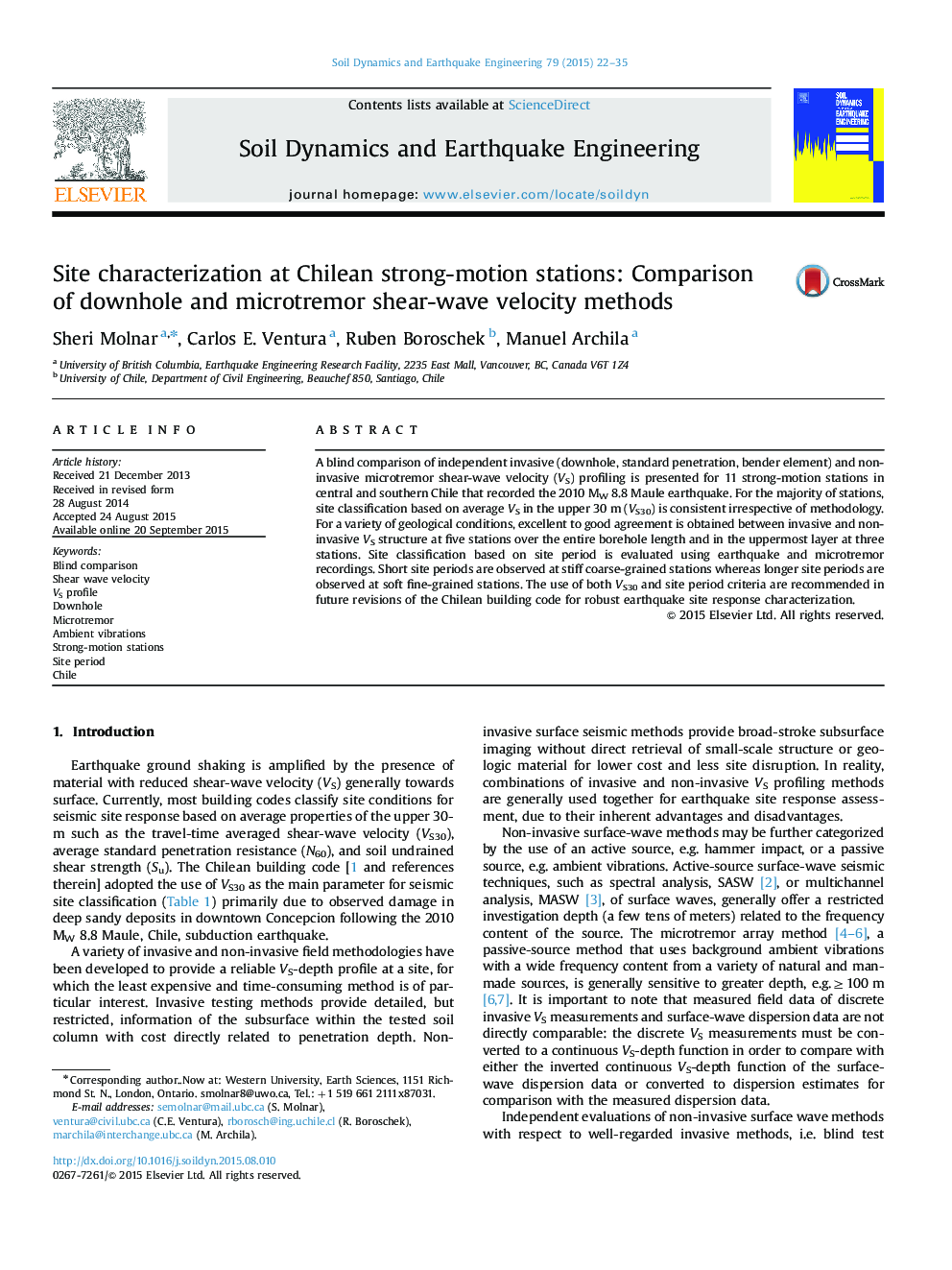| Article ID | Journal | Published Year | Pages | File Type |
|---|---|---|---|---|
| 303991 | Soil Dynamics and Earthquake Engineering | 2015 | 14 Pages |
•We compare VS results from two independent methods at 11 Chilean strong-motion stations.•Site classification based on VS30 is generally consistent irrespective of methodology.•Average relative difference in VS between methodologies is 10% for soil layers and 30% for base rock.•Site classification based on site period is more sensitive to underlying VS structure than VS30.
A blind comparison of independent invasive (downhole, standard penetration, bender element) and non-invasive microtremor shear-wave velocity (VS) profiling is presented for 11 strong-motion stations in central and southern Chile that recorded the 2010 MW 8.8 Maule earthquake. For the majority of stations, site classification based on average VS in the upper 30 m (VS30) is consistent irrespective of methodology. For a variety of geological conditions, excellent to good agreement is obtained between invasive and non-invasive VS structure at five stations over the entire borehole length and in the uppermost layer at three stations. Site classification based on site period is evaluated using earthquake and microtremor recordings. Short site periods are observed at stiff coarse-grained stations whereas longer site periods are observed at soft fine-grained stations. The use of both VS30 and site period criteria are recommended in future revisions of the Chilean building code for robust earthquake site response characterization.
